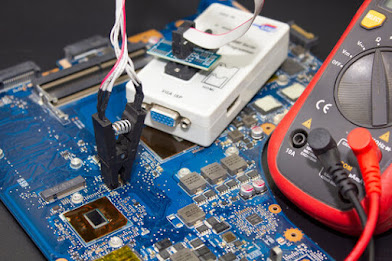Analog vs Digital: What is the Difference Between Analog and Digital?
What is Signal?
A signal is an electromagnetic or electrical current that is used for carrying data from one system or network to another. The signal is a function that conveys information about a phenomenon.
In electronics and telecommunications, it refers to any time-varying voltage that is an electromagnetic wave which carries information. A signal can also be defined as an observable change in quality such as quantity. There are two main types of signals: Analog signal and Digital signal.
In this Analog and Digital difference tutorial, you will learn:
- What is Signal?
- What is an Analog Signal?
- What is a Digital Signal?
- Characteristics OF Analog Signal
- Characteristics of Digital Signals
- Difference Between Analog and Digital Signal
- Advantages of Analog Signals
- Advantages of Digital Signals
- Disadvantages of Analog Signals
- Disadvantage of Digital Signals
What is an Analog Signal?

What is a Digital Signal?

A digital signal is a signal that is used to represent data as a sequence of separate values at any point in time. It can only take on one of a fixed number of values. This type of signal represents a real number within a constant range of values. Now, let’s learn some key difference between Digital and Analog signals.
KEY DIFFERENCES:
- An analog signal is a continuous signal whereas Digital signals are time separated signals.
- Analog signal is denoted by sine waves while It is denoted by square waves
- Analog signal uses a continuous range of values that help you to represent information on the other hand digital signal uses discrete 0 and 1 to represent information.
- Comparing Digital vs Analog signals, The analog signal bandwidth is low while the bandwidth of the digital signal is high.
- Analog instruments give considerable observational errors whereas Digital instruments never cause any kind of observational errors.
- Analog hardware never offers flexible implementation, but Digital hardware offers flexibility in implementation.
- Comparing Analog vs Digital signal, Analog signals are suited for audio and video transmission while Digital signals are suited for Computing and digital electronics.
Characteristics OF Analog Signal
Here, are essential characteristics of Analog Signal
- These type of electronic signals are time-varying
- Minimum and maximum values which is either positive or negative.
- It can be either periodic or non-periodic.
- Analog Signal works on continuous data.
- The accuracy of the analog signal is not high when compared to the digital signal.
- It helps you to measure natural or physical values.
- Analog signal output form is like Curve, Line, or Graph, so it may not be meaningful to all.
Characteristics of Digital Signals
Here, are essential characteristics of Digital signals
- Digital signals are time separated signals.
- This type of electronic l signals can be processed and transmitted better compared to analog signal.
- Digital signals are versatile, so it is widely used.
- The accuracy of the digital signal is better than that of the analog signal.
Difference Between Analog and Digital Signal
Here are the important difference between Analog and Digital transmission:

Difference between Analog and Digital signals
| Analog | Digital | |||||||||
|---|---|---|---|---|---|---|---|---|---|---|
| An analog signal is a continuous signal that represents physical measurements. | Digital signals are time separated signals which are generated using digital modulation. | |||||||||
| It is denoted by sine waves | It is denoted by square waves | |||||||||
| It uses a continuous range of values that help you to represent information. | Digital signal uses discrete 0 and 1 to represent information. | |||||||||
| Temperature sensors, FM radio signals, Photocells, Light sensor, Resistive touch screen are examples of Analog signals. | Computers, CDs, DVDs are some examples of Digital signal. | |||||||||
| The analog signal bandwidth is low | The digital signal bandwidth is high. | |||||||||
| Analog signals are deteriorated by noise throughout transmission as well as write/read cycle. | Relatively a noise-immune system without deterioration during the transmission process and write/read cycle. | |||||||||
| Analog hardware never offers flexible implementation. | Digital hardware offers flexibility in implementation. | |||||||||
| It is suited for audio and video transmission. | It is suited for Computing and digital electronics. | |||||||||
| Processing can be done in real-time and consumes lesser bandwidth compared to a digital signal. | It never gives a guarantee that digital signal processing can be performed in real time. | |||||||||
| Analog instruments usually have s scale which is cramped at lower end and gives considerable observational errors. | Digital instruments never cause any kind of observational errors. | |||||||||
| Analog signal doesn’t offer any fixed range. | Digital signal has a finite number, i.e., 0 and 1. |
Advantages of Analog Signals
Here, are pros/benefits of Analog Signals
- Easier in processing
- Best suited for audio and video transmission.
- It has a low cost and is portable.
- It has a much higher density so that it can present more refined information.
- Not necessary to buy a new graphics board.
- Uses less bandwidth than digital sounds
- Provide more accurate representation of a sound
- It is the natural form of a sound.
Advantages of Digital Signals
Here, are pros/advantages of Digital Signals:
- Digital data can be easily compressed.
- Any information in the digital form can be encrypted.
- Equipment that uses digital signals is more common and less expensive.
- Digital signal makes running instruments free from observation errors like parallax and approximation errors.
- A lot of editing tools are available
- You can edit the sound without altering the original copy
- Easy to transmit the data over networks
Disadvantages of Analog Signals
Here are cons/drawback of Analog Signals:
- Analog tends to have a lower quality signal than digital.
- The cables are sensitive to external influences.
- The cost of the Analog wire is high and not easily portable.
- Low availability of models with digital interfaces.
- Recording analog sound on tape is quite expensive if the tape is damaged
- It offers limitations in editing
- Tape is becoming hard to find
- It is quite difficult to synchronize analog sound
- Quality is easily lost
- Data can become corrupted
- Plenty of recording devices and formats which can become confusing to store a digital signal
- Digital sounds can cut an analog sound wave which means that you can’t get a perfect reproduction of a sound
- Offers poor multi-user interfaces
Disadvantages of Digital Signals
- Sampling may cause loss of information.
- A/D and D/A demands mixed-signal hardware
- Processor speed is limited
- Develop quantization and round-off errors
- It requires greater bandwidth
- Systems and processing is more complex.






Comments
Post a Comment